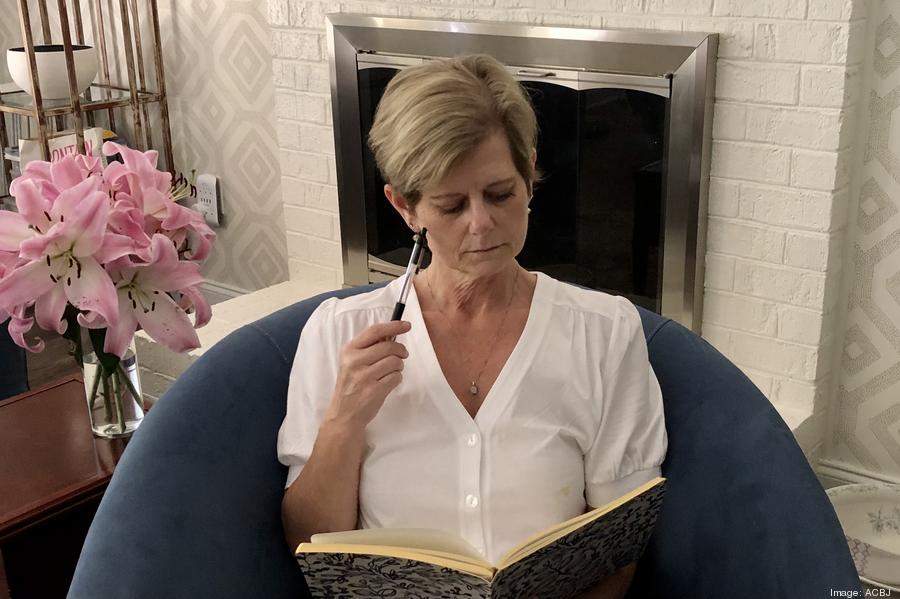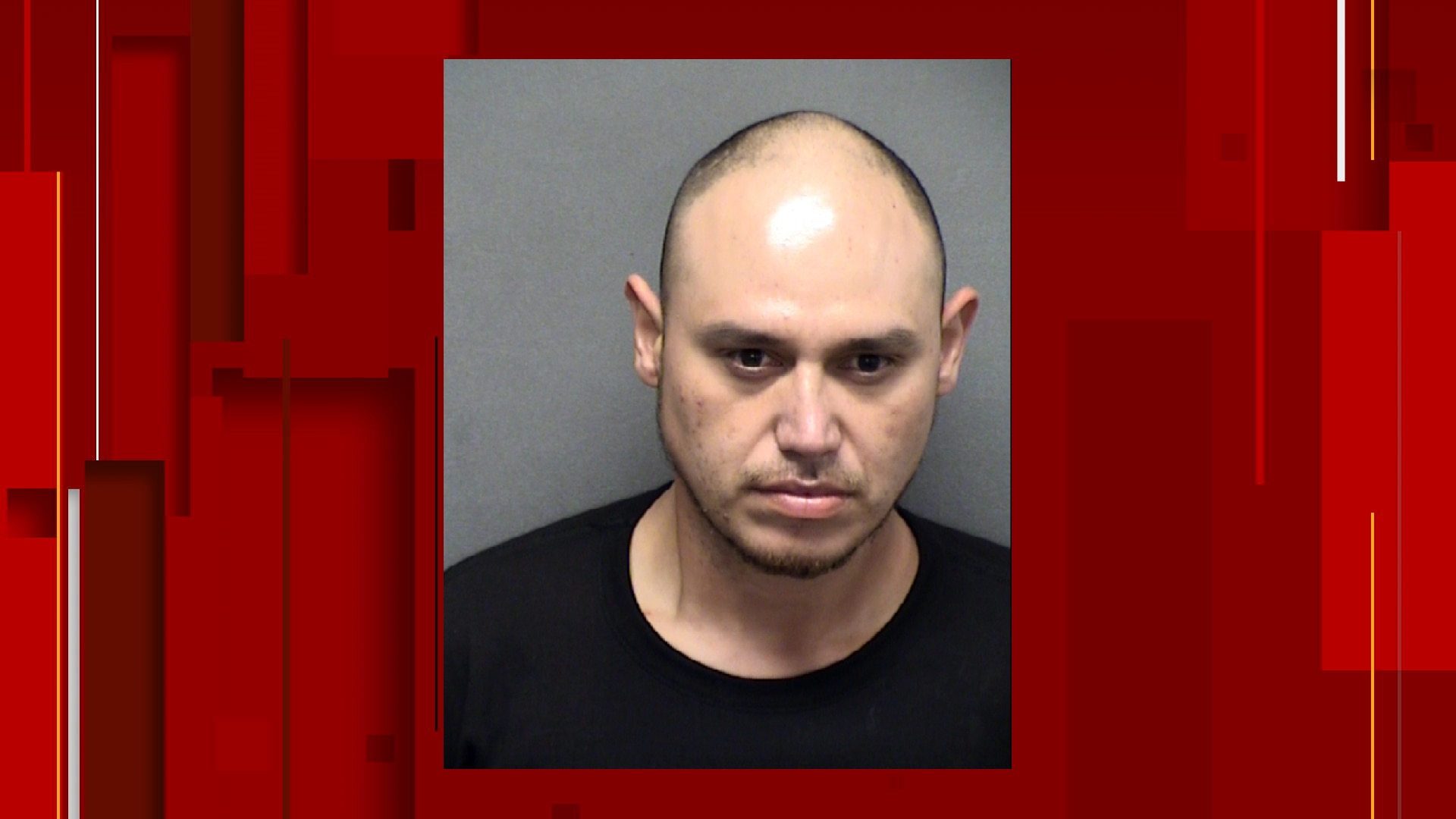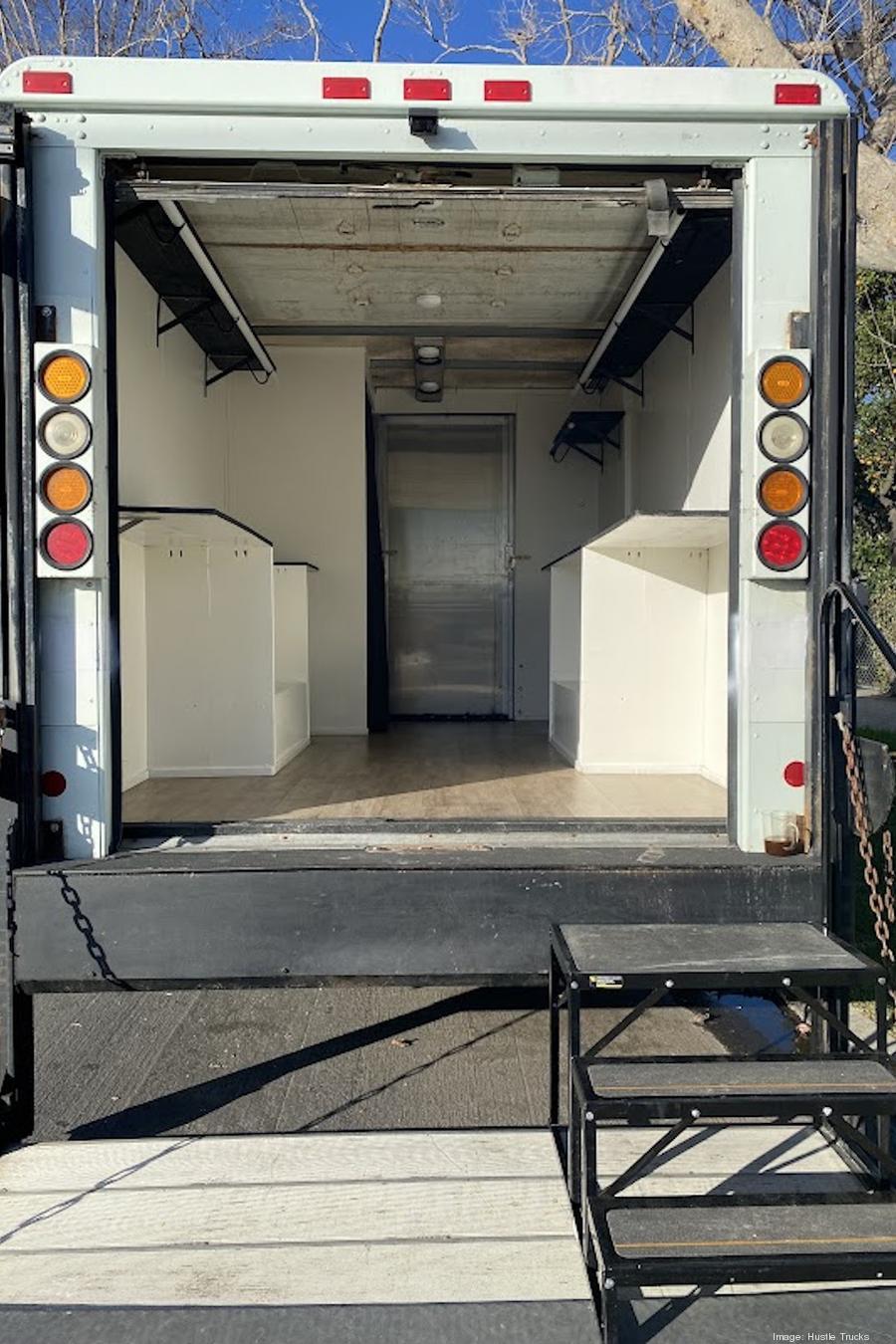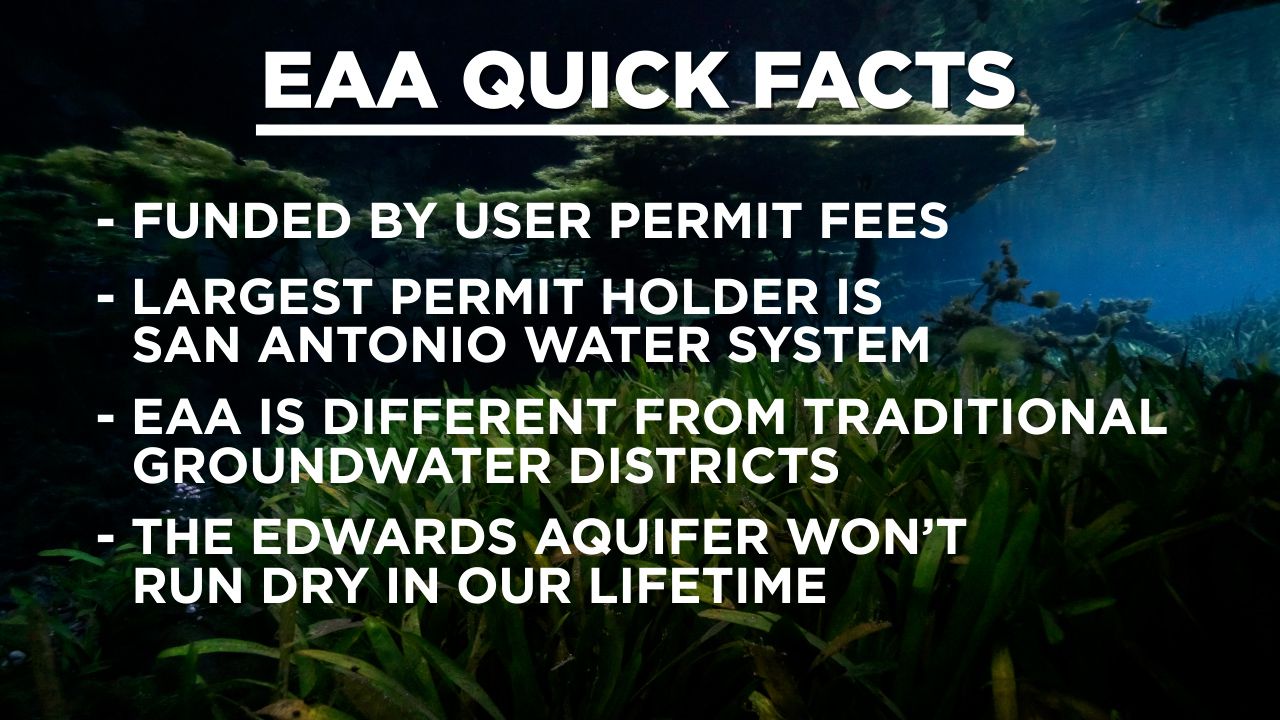The era of big office space is closing fast. What companies do next will determine who stays and who goes.
Category: San Antonio News
This category is for general business news stories local to San Antonio.
Man, woman charged with child endangerment after locking three children in cabinets with zip ties, arrest affidavit shows
A man and a woman are facing child endangerment charges after they tied and locked up three children in a cabinet, according to an arrest affidavit.
The affidavit states Eric Jesus Martinez, 30, and Valerie Diaz, 34, locked up the children in cabinets with zip ties, sometimes several days at a time.
On Dec. 21, police were called for a welfare check at an apartment in San Antonio. Diaz had called to report that her children were locked in cabinets for the past three days.
When police arrived, they observed Martinez driving in the parking lot of the complex. He followed police instructions to park the truck and get out. The three children — ages five, six, and 11 — were also in the truck with Martinez.
Police said Martinez had an active warrant and was taken into custody. Diaz was taken in for questioning.
Diaz told police about an incident that happened three weeks prior. She had found the six-year-old boy with a cut on his head. The boy told her the cut came from “hitting his head on a door handle.”
Martinez told Diaz it was an accident. He had slapped the boy, causing him to fall backward and hit his head, police said.
Diaz said the boy appeared dazed and was crying, according to police. She was concerned that if he fell asleep, he might not wake up. Officers said they asked why she didn’t seek medical attention, to which she stated that she was afraid the boy would be taken away.
The boy told police he was slapped multiple times by Martinez and pushed, according to the affidavit.
Diaz said Martinez would hit the children with his hand, belt, and other plastic objects on multiple occasions. Officers said he would also put the children in kitchen cabinets and lock them using screws.
Diaz admitted to putting them in the cabinet one time but did not lock them inside. Instead, Martinez locked the cabinet, Diaz said.
Police said the children were locked in the cabinet sometimes for days without being fed. They were only let out sometimes to use the bathroom.
Officers observed the apartment and found little to no food inside. They also said they found three cabinets with holes to attach the screws.
Police said they also found zip ties on the floor and drawings inside the cabinets.
Martinez is facing three counts of child endangerment and three counts of unlawful restraint. Diaz is facing child endangerment charges as well.
HIGHLIGHTS: Connor Foote powers Alamo Heights to repeat at Region VII-5A Swimming Championships
Highlights and reaction from Bill Walker Pool, as high school swimmers from around the San Antonio area competed in the 2022 UIL Region VII-5A Swimming & Diving Championships looking to punch their tickets to this year’s state meet in Austin.
HIGHLIGHTS: Clark’s Croley, Johnson’s Scott headline Region VII-6A Swimming Championships
Highlights and reaction from Josh Davis Natatorium, as high school swimmers from around the San Antonio area competed in the 2020 UIL Region VII-6A Swimming & Diving Championships looking to punch their tickets to this year’s state meet in Austin.
Security at San Antonio bars working hard to spot fake IDs
The use of fake IDs seems to be inevitable.
“On Saturdays, mostly on the weekend with college kids,” said Jose Alvarado, head of security at a bar on the St. Mary’s strip, referring to the people who usually use fake IDs.
It’s particularly more frequent for bars located near college campuses.
Last Saturday alone, Alvarado said they discovered about eight or nine fake IDs.
Bartenders and security are having to look at IDs more closely, especially near college campuses. Fake IDs are getting more believable. Tonight on the #NightBeat the points they’re checking for and the warning from TABC for anyone tempted to use a fake. @ksatnews pic.twitter.com/qCPMur7uET
— Leigh Waldman (@LeighWaldman) February 9, 2022
While working on the strip, Alvarado notices fake ID usage correlates with college schedules.
“Right around November when the kids started getting released out of school, like the holidays. It has it got progressively worse since probably November, December,” Alvarado said.
It’s an issue not unique to our city. Chris Porter with the Texas Alcoholic Beverage Commission (TABC) said it happens in other locations with colleges and universities as well.
“A number of younger people, many of whom are underage, might be trying to use a false ID to attempt to purchase alcohol. The good news is many bars are aware of the problem,” Porter said.
That’s why the bar Alvarado works at and others on the strip look out for one another.
“If you see them, you can make that call if you want to let them in or not. Up at your bar. But this is the issue that we had here,” Alvarado said.
Porter said the training bar security and bartenders receive through TABC allows them to stop 90% of fake ID usage from being successful.
Part of that training includes closely examining each ID hands-on.
Alvarado also uses a UV light on the back of the ID.
“We do check. There is a box here on the back that does glow in the dark with your face and also shows your actual birthdate,” Alvarado said.
While the use of fake IDs isn’t uncommon, Alvarado and Porter hope minors understand it is not a victimless crime.
“Not only am I at fault here, but the whole bar gets shut down. Then we put people out of work, you know, and people are still gotta eat,” Alvarado said.
“Someone who is underage and those people go out, and they themselves may not face an injury, but they do take the life of someone who would otherwise have probably continued living,” Porter said.
There is some protection for bars, according to Porter. As long as the ID presented has accurate information, a photo of the person attempting to use it and closely resembles a real government-issued ID, the bar and bartender will not face a fine.
If someone knowingly sells to a minor, there are consequences for the individual and the business.
“[A] business selling alcohol to a minor — that is a Class A misdemeanor for the individual who actually conducts the sales. That person could face up to a year in jail and a fine of anywhere between $500 to $4,000. For the bar itself, that could face penalties from TABC up to and including a suspension of their license to sell alcohol,” Porter said.
As far as penalties for someone attempting to use a fake ID, Porter said, “purchasing alcohol with a fraudulent ID is a Class C misdemeanor. And so the person that is accused of doing that, they’re going to be convicted in court. They could face a fine up to $500.”
Sex and slave labor is a problem in Bexar County, local survivor advocate says
Children as young as 4 years old have been victims of human trafficking in the Bexar County community, according to Chara McMichael, executive director of the Human Trafficking Interdiction Division for BCFS Health & Human Services.
McMichael said she would see about one referral request for survivor services a week when she started her position a couple of years ago. She said it’s not uncommon for her to see several referrals a day now.
BCFS Health & Human Services operates in a few main regions: the Houston area, San Antonio area, Williamson County, and the Rio Grande Valley.
McMichael said Bexar County creates a perfect area for human traffickers to travel through.
“Multiple major highway corridors and their connections enable for the easy flow of the traffic,” she said.
McMichael said online exploitations have increased with young students being pushed into online learning. She said more education and advocacy are needed to prevent children from becoming victims and help survivors.
“Statistics will show that within 24 hours, one in three runaways is sold into sex trafficking. Approximately 40 percent of runaways end up in labor trafficking,” McMichael said. “Parents often aren’t equipped to handle that, and as a result, the kids run again. And so we see a lot of recidivism as a result.”
She hopes that a Texas law that was recently upgraded will help make sure trafficking suspects are held accountable.
House Bill 1540 makes the purchase of sex from an adult a state jail felony on the first offense. Purchasing from a minor is already a second-degree felony. The law also goes after owners who turn a blind eye to human trafficking on their property.
“Where that has already been implemented in California, they have seen a significant reduction because the owners are getting involved, and they’re starting to clear out their own businesses and ensure that we have reputable operators that are operating within their buildings,” McMichael said.
San Antonio city ordinances enforced by the Dangerous Risk Assessment Team, DART, focus on problem properties. The city says although there was a lack of evidence to bring charges in the handful of suspected human trafficking properties, they were able to close the locations.
Kerr County Sheriff’s Office is teaming up with area law enforcement to conduct sex stings and is always looking for information on possible victims of human trafficking.
Captain Jason Waldrip said these cases are hard to crack.
“Victims are in some sort of duress or threat to prevent them from speaking out, or they have a distrust for police,” he said.
Police press those they arrest for any information that could lead them to more victims.
McMichael said human trafficking could include both sex and slave labor. She said slave labor is often found in local hotels, manufacturing facilities, kitchens, massage parlors or even in plain sight, where a child is put to peddle on street corners.
There are many signs to look for in a victim of human trafficking, click here to learn more.
Entrepreneurship surged during the pandemic. Here are some tips for taking the plunge.
Experts share best practices for starting and sustaining a small business in 2022.
Sheriff: BCSO will comply with video release policy after approval bundle deal of body cam upgrades, new Tasers
Bexar County Sheriff Javier Salazar says his office will soon be complying with a county policy to release video of critical incidents — such as when a deputy shoots a suspect — within 10 days.
Salazar had previously pushed against the time frame, which commissioners approved in December. The sheriff said the policy was pushed “capriciously and out of malice” by former Precinct 3 Commissioner Trish DeBerry, with whom he often butted heads.
But with commissioners poised Tuesday to approve a bundle deal including upgraded body camera technology, he promised to implement the 10-day policy.
“I am committed to that. So — and we’re going to try to get there as quickly as possible,” Salazar told commissioners.
Commissioners subsequently voted 4-1 to amend a contract with the county’s body camera provider, Axon, to get upgraded capabilities for its cameras and 550 new Tasers. BCSO says the majority of the weapons have reached their end of life and need to be replaced.
The county is currently in the third year of a five-year, $6.4 million contract with Axon. The amended contract would add an extra two years and cost an additional $3.1 million, though BCSO officials said they would have had to pay to upgrade the Tasers separately anyways.
“With that $2.5 million now that was going to be expended to upgrade our Tasers — to update our Tasers — we’re getting all this other technology and equipment and capabilities, you know, lumped in as part of this package,” Salazar said, quoting a figure from an Axon representative on the cost of replacing the Tasers “a la carte.”
Those other capabilities, he told reporters, include automated redaction software that will make it easier to blur faces and license plates in the videos that need to be released under the county policy. Currently, he told reporters, BCSO has to perform redactions manually for each body camera.
“So let’s say, for argument’s sake, a person’s face appeared in each of those five (body cameras),” Salazar said. “I had to manually redact that face five times, and it wasn’t minute by minute. For every minute footage, it would take me two-and-a-half to three minutes, per minute, per deputy to redact that,” Salazar told commissioners.
Precinct 4 Commissioner Tommy Calvert was the lone vote against amending the Axon contract. Though his arguments during the meeting mostly pertained to the contract process, he also wrote a letter on Feb. 4 claiming BCSO already had the tools to meet the 10-day timeline for releasing videos.
Salazar says that’s incorrect.
“We had not. Now we’re going to have it, and we’re excited at the possibilities,” the sheriff said after the meeting. “We’re excited at the new technologies that we’ve got at our fingertips now. It’s just a matter of getting the right folks hired and getting them trained up on how to effectively do this.”
Salazar had initially proposed 120 days for implementation and training before BCSO would follow the 10-day turnaround policy. At the urging of Precinct 1 Commissioner Rebecca Clay Flores, he agreed to a 60-day ramp-up period instead.
The sheriff said after the meeting that the 60-day period would begin once BCSO was able to hire two employees who would handle the video redactions.
How does the Edwards Aquifer work & why is it so heavily regulated? KSAT Explains
If you’re a regular KSAT 12 viewer, you’ve seen it before – our Weather Authority team reporting on the Edwards Aquifer’s water levels.
The aquifer is the primary source of water for millions of us around South Central Texas and the Hill Country. Its health and future affects us all.
For this episode of KSAT Explains, we’ve partnered with two KSAT 12 meteorologists who report on the aquifer daily. They help us explain how the aquifer works, why it’s so heavily regulated and the conservation efforts in place that help keep the aquifer — and the creatures who call the aquifer home — healthy.
(Watch the full episode in the video player above.)
SMART. IN-DEPTH. LOCAL: Click here for more episodes of KSAT Explains
How the aquifer works
The Edwards Aquifer and its catchment area cover about 8,000 square miles. It encompasses an area from Edwards and Kinney Counties, and goes as far east as Travis and Hays Counties.
To understand it better, there are three important sections of the aquifer you should know about:
The contributing zone, sometimes called the drainage zone, is in the Hill Country.Then there’s the recharge zone, which features areas of the aquifer that are fractured and visible on land. Think of areas like Government Canyon, where limestone is visible.And finally, there’s the artesian zone, where San Antonio lies. In the artesian zone, water is harvested through wells.
In short, here’s how the aquifer works: rain falls on the contributing zone and runs downhill into the recharge zone, where it enters the porous aquifer. Similarly, rain can fall directly on the recharge zone and immediately enter the aquifer.
Then, pressure from all of the water builds up in the artesian zone, and we harvest it by digging wells. The aquifer level you see reported on KSAT 12 by our meteorologists is the level of the water at one of these wells, J-17.
Why does the aquifer exist?
To answer the question of why the Edwards Aquifer exists, we have to go back more than 100 million years to when Texas was under shallow seas and San Antonio was a beach.
You can actually see evidence of this in the form of dinosaur tracks at Government Canyon. These tracks are believed to have been formed either on a muddy or sandy beach.
Back when Texas was partially underwater, that water was filled with mollusks and clams. They died and over millions of years, their remains have formed karst, or porous limestone, which is what the aquifer is made out of.
Justin Horne goes caving to help you understand the aquifer
One of the best ways to understand the aquifer is to go down into one of the thousands of caves located in the Texas Hill Country. That’s why Justin Horne headed out to Comal County to take a trip down a limestone cave.
“At one time, the cave was filled with water,” said Geary Schindel, president of the National Speleological Society. “These caves allow us to look at the fabric of the limestone to understand better how groundwater moves through the system, how it goes from recharge to discharge.”
The cave Justin visited was formed millions of years ago. Which brings us back to karst.
“Karst is a landscape that’s characterized by sinkholes and sinking streams in caves and springs,” Schindel said. “It’s also what we call a subsurface system that allows us to transport or move water through it very quickly.”
Just how quickly? Dye testing provides that answer: the groundwater velocity has been measured as great as a mile per day.
The walls of caves also give researchers a good idea of what the aquifer looks like, and how water moves through the system and is eventually discharged at the springs.
Learning facts like these demonstrates how important caves are to those who study the aquifer. And while most of the Hill Country caves are just relics, a few provide actual access to the aquifer.
“There are some caves in Bexar County and Medina Valley and Hays County, where we’ve been able to go through the cave down deep enough, that we’ve actually seen the Edwards Aquifer itself,” Schindel said. “It goes to show you how fragile it is.”
The creation of the Edwards Aquifer Authority
The Edwards Aquifer’s formation is fascinating and dates back millions of years. But it’s during the aquifer’s more recent history where things have become more complicated. These complications eventually led to the creation of the Edwards Aquifer Authority.
“The beginning really stems from a lot of conflict and controversy over what to do about this resource,” said Roland Ruiz, general manager of the Edwards Aquifer Authority.
In the 1980s, the Edwards Aquifer had long been San Antonio’s main water source. But in a rapidly growing city, there was concern about whether there was enough water for everyone.
“Then, much like now, there really weren’t many laws dictating how you could limit groundwater withdrawals,” said Amy Hardberger, director at the Center for Water Law and Policy. “So the Sierra Club in the ‘90s brought an endangered species suit, which was sort of the only way to go about something like that.”
The Sierra Club’s 1991 lawsuit against the U.S. Fish and Wildlife Service cited negligence to provide the necessary protection required by the Endangered Species Act.
In 1993, a federal judge issued a ruling in favor of the Sierra Club, requiring the Texas Water Commission to maintain flows from the Edwards Aquifer-fed Comal and San Marcos springs.
“The judge said … you either need to manage this or the federal government and me are going to come in and do it,” Hardberger said. “The Legislature has never moved so fast.”
The Edwards Aquifer Authority, or EAA, was created on May 30, 1993, and became fully operational three years later. More than 20 years later, the EAA is by all accounts a success story.
“San Antonio is so much bigger than it was, and the aquifers are doing just fine because we’ve adjusted,” Hardberger said.
The EAA’s mission is three-pronged: manage, enhance and protect the Edwards Aquifer. And over its history, they’ve evolved from mostly managing the aquifer, to shifting more toward protecting and enhancing it.
This brings us to where we are now – a city where uniquely, the local news reports the aquifer every day.
“I think that’s a testament to how important it’s become and how the conservation ethic has taken root,” Ruiz said.
According to Ruiz, the biggest challenge moving forward is making sure the aquifer remains sustainable in the face of a number of potential risks, including climate change and development.
“Is there a threat that the quality of water that gets into the aquifer is going to be compromised at some point? Is there a threat that not only the quality, but the quantity is going to be impacted in some way? So that’s what we’re looking at our field research park,” he said.
The EAA’s mission is not over. One way the EAA and the City of San Antonio are preserving the aquifer for future generations is through conservation easements. Through sales tax funding, the city has bought more than 160,000 acres of conservation easements over the aquifer. A conservation easement simply means the landowners agree not to develop the land in an effort to protect the aquifer.
“What that easement does is it has certain conditions attached to it that prevents development of that property, and it keeps it in this natural state … to allow the processes of recharge to happen on the property to be uninterrupted by impervious cover and other types of development,” said Thomas Marsalia, EAA protection manager.
Protecting Endangered Species
As explained above, the Edwards Aquifer Authority was created to protect species that rely on the aquifer – and to keep the federal government out of managing it. In an effort to avoid further federal involvement, the EAA put together a Habitat Conservation Plan to make sure the numbers of certain species stay at healthy levels.
In total, there are 11 endangered, threatened, or petitioned to be endangered species that call the springs of the Edwards Aquifer home.
“A lot of people are very surprised that the limits that we have on watering are actually for these tiny little critters,” Hardberger said.
In 2013, five entities with permits to draw from the Edwards Aquifer agreed to the Habitat Conservation Plan. Those entities are the EAA, San Antonio Water System, the City of San Marcos, the City of New Braunfels and Texas State University. You may not hear much about the Habitat Conservation Plan, but it plays a vital role in how the aquifer is managed.
Making sure the protected species that inhabit the aquifer remain at heaty levels is something the EAA believes we al should care about.
“Those species are kind of like the canary in the coal mine so to speak,” Ruiz said. “They’re indicators of the quality and quantity of water in the aquifer. So its not just for their benefit, it’s really for all our benefit that the program exists.”
Texas Blind Salamanders
If there’s a poster child for conservation efforts within the Edwards Aquifer, it’s the Texas blind salamander. In fact, the San Marcos Aquatic Resources Center keeps a backup population alive and well just in case something catastrophic happens to the aquifer or the rivers that feed it.
At the San Marcos Aquatic Resources Center, they feed and breed the Texas blind salamanders to keep the population strong. The center says it’s a charismatic species, and that’s what makes it a great mascot for the aquifer.
“Who doesn’t love a salamander that’s kind of odd and a little creepy looking, but cute at the same time?” said Katherine Bockrath, Ph.d., lead researcher at the center. “I think people gravitate to it an its cuteness and its slight creepiness, but also its mystery.”
The blind salamander really is a bit of a mystery. Details about the species’ population are a bit fuzzy. But researchers are working to get some clarity.
“We do some tagging where we catch the animals,” said Adam Daw, Refugia Lead at the San Marcos Aquatic Resources Center. “We’ll release some that we catch and we’ll tag them so that if we catch them again, we’ll know it and can give us an idea of how many are down there.”
In reality, it’s difficult to know just how large or small the Texas blind salamander population is, simply because the tiny creatures live deep underground and underwater in a vast, pitch-black aquifer which spans thousands of miles. But we do know that they’re likely a top predator within the aquifer system – eating worms and small shrimp.
Researchers have also determined that the salamanders can live for quite a long time because of their slow metabolism.
“We have some here that have lived about 10 to 15 years so far,” Daw said. “I wouldn’t be surprised if they live 20 years or more.”
So, if the Texas blind salamanders live for quite some time, and their population is healthy, why do we need to regulate the water level and quality of the aquifer?
“They have very permeable skin,” Bockrath said. “If there’s some contaminant in the water, it’s going to permeate them, too … they’re super sensitive to environmental changes.”
And, again, these conservation efforts are not just about the protected species.
“We’re actually preserving these ecosystems and these river systems for our use, too,” Bockrath said.
What is the aquifer report number KSAT 12 reports every day?
Every day our viewers see KSAT 12 Weather Authority meteorologists giving the aquifer report. But have you ever wondered what that level means and where we get that number from? It’s actually measured at the J-17 Index Well, located on Joint Base San Antonio-Fort Sam Houston.
J-17 is literally just a small hole in the floor, surrounded by a box. It was drilled in 1914 to supply water to Fort Sam Houston.
“This is definitely one of the most important wells in Texas,” said Bryan Anderson, EAA data management director. “It definitely, as far as statewide goes, has one of the longest histories.”
Continuous observations started at the well in 1932 by the U.S. Geological Survey. The amount of historic data is what makes J-17 so valuable to aquifer scientists. Today, we get electronic aquifer measurements every 15 minutes.
TRUST INDEX: COVID-19 infection can cause infertility, erectile dysfunction in men, studies show
Scientists worldwide have found that COVID-19 vaccines are not linked to infertility. However, new research shows the virus itself may be.
The KSAT Trust Index team was asked to verify the claim that getting COVID-19 could affect a man’s sexual health, so we dove into some recent studies to find out.
A new study out of Belgium found men experienced lower sperm motility and lower sperm counts over two months after having COVID-19. It showed sperm motility was reduced in 60 percent of men less than one month after COVID-19 infection, 37 percent of men one to two months after COVID-19 infection, and 28 percent of men more than two months after infection.
Then, an even larger study from Boston University, funded by the National Institutes of Health, linked the virus that causes COVID-19 to male fertility issues.
“Male partners, if they had a COVID infection two months prior to an opportunity to conceive, there was decreased chance of getting pregnant,” said Dr. Jason Bowling, an infectious disease expert with University Health System and UT Health San Antonio.
Couples in which the male partner had tested positive within two months were 18 percent less likely to conceive.
The study mentioned possible reasons for that temporary decline in fertility:
fever, a common COVID-19 symptom, is known to reduce sperm count and motilityinflammation in the testes and nearby tissueserectile dysfunction
The researchers mentioned those are all common after COVID, and Dr. Bowling said another study backs that up.
“There was a study out of the University of Florida that showed for men that have acute COVID infection, afterward they are three times more likely to be diagnosed with erectile dysfunction than if they don’t have COVID infection,” Dr. Bowling said.
The researchers in all three studies noted the issues could potentially be avoided by vaccination.
“Even more reasons for couples who are concerned with getting pregnant or fertility issues to get the COVID vaccine,” Bowling said.
So, the claim that getting COVID-19 could affect male sexual health is true on the KSAT Trust Index.
We’ve reviewed information surrounding this topic and confirmed that It’s True.
If you have a a claim, picture or post you would like us to verify, you can submit it on the KSAT Trust Index page.









